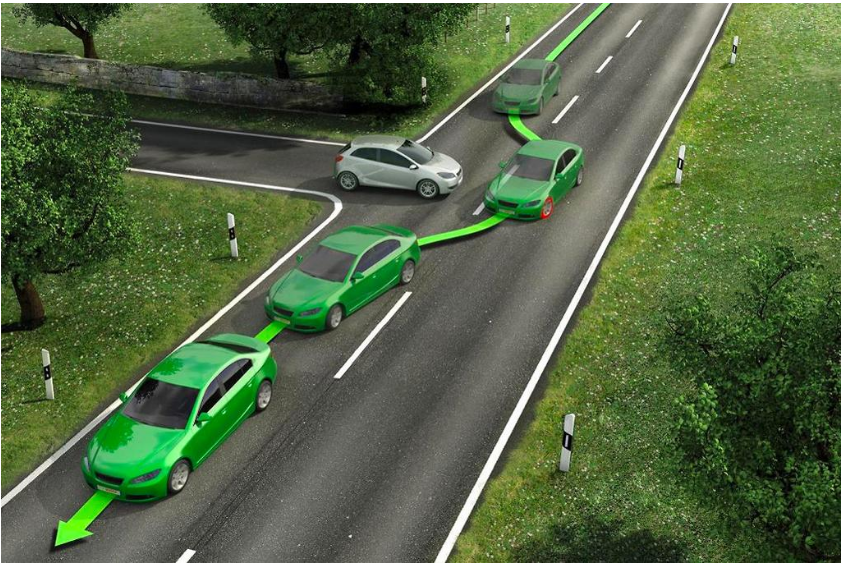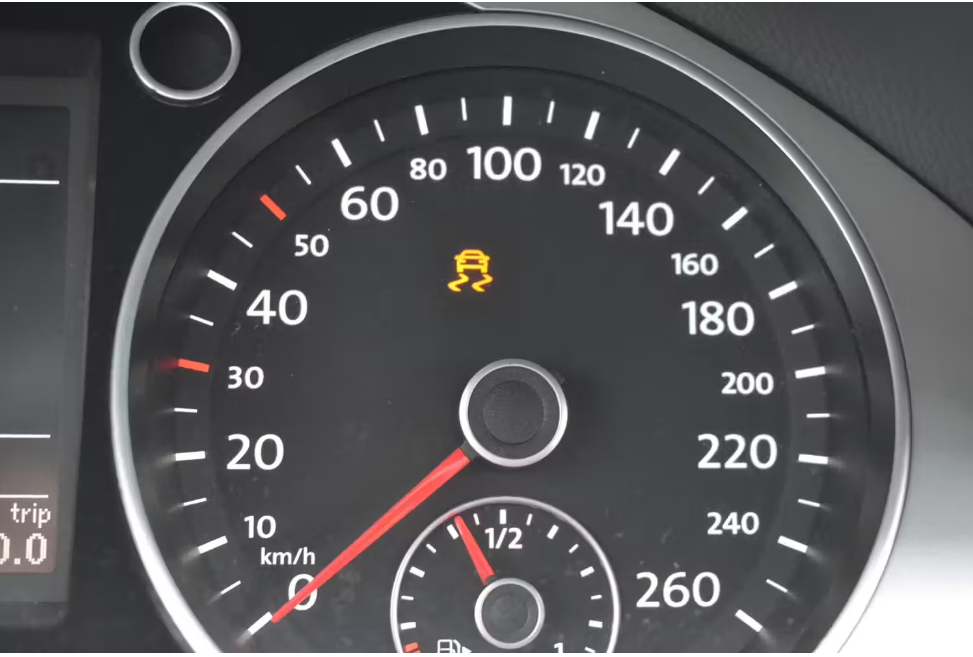What Is Electronic Stability Control, Or ESC, On A Car?

Electronic Stability Control, or ESC for short, is a generic term that is widely used in the industry. For the purposes of this article, we will use ESC as the default term to refer to all varieties of stability control.
However, what exactly does ESC, which stands for electronic stability control, do on a vehicle? It is a control system that reads inputs such as the speed of the vehicle, the steering angle, the yaw, and the speed of each individual wheel. These inputs come from a variety of sensors.
If the inputs indicate that the driver is losing control of the vehicle’s direction and may skid, which means that the car will not go in the direction that the driver wants to go and in which the steering wheel is pointed, the system may take corrective action to steer the vehicle back onto the intended path.
The following are the most frequent causes of a loss of directional control:
Wheel lockup.
When the brakes are applied to a vehicle that does not have anti-lock braking system (ABS), the wheels lock up, which causes the vehicle to slide in the direction that its momentum is pushing it regardless of the steering input.
In order to maintain some degree of steering control and prevent the wheels from locking up completely, an anti-lock braking system (ABS) sends rapid pulses through the braking system.
Understeer.
The driver of the car intended for the car to turn into the corner more sharply than it actually did due to front-wheel slippage.
This caused the car to go straight through the turn. The electronic stability control (ESC) applies the brakes to the inside rear wheel, which pulls the nose of the vehicle into the corner and reduces understeer.
Oversteer.
The back end of the vehicle slips to the side, and the driver has to make a quicker turn than he had planned, which results in the vehicle’s nose pointing towards the inside of the curve rather than forward into the road.
The oversteer is brought to a halt by the electronic stability control, which applies the brakes to the outside front wheel.
There are a variety of permutations and combinations of these three possible outcomes. There are instances when the intervention of the ABS is all that is required to prevent a skid while the vehicle is using the brakes, and there are other occasions when the intervention of the ESC is also required to maintain directional stability around a corner.
These systems operate in perfect harmony with one another to maintain the vehicle’s stability. Less complex ESC systems merely manage the brakes, whereas more complex ESC systems may also lower the torque produced by the engine. This takes excess power away from the drive wheels, giving the driver a finer degree of control.

Control for Stability vs Control for Traction
You could be familiar with the term “traction control system” (TCS) and believe that it is synonymous with “stability control.” It is not that. When contrasted with stability control, the traction control system (TCS) is noticeably less complicated than its counterpart.
But what exactly does it signify when it’s written on a car? And what exactly is the function of the traction control? It does this by operating the anti-lock braking system in reverse, checking to see whether any of the wheels are spinning while the engine is running, which would result in a loss of accelerating traction.
If it detects a wheel that is spinning, it will apply the brakes to that wheel in order to restore the vehicle’s traction. It is only able to detect wheelspin, unlike ESC, which can also detect yaw, oversteer, and understeer.
Even if they lack ESC, many older vehicles still retain this system since it is one of the most fundamental ones. It is not the case that the opposite is true, and it is almost a certainty that traction control will be present in a vehicle if it has electronic stability control (ESC).
Therefore, it is often okay to mention that your vehicle has TCS when you mean ESC or ESP, but it is not correct to imply the converse.
What Is an ESP System, Also Called an ESC System, DSC System, VSA System, or VSC System?
These terms are interchangeable with ESC. The question now is, what exactly is ESP, and what does it stand for? E.S.P. is an abbreviation for Electronic Stability Program, which is only another word for stability control. The automotive industry and individual automobile manufacturers each call their branded iterations or varieties of ESC and ESP systems by a different name.
Here are some examples that have been utilized throughout the years:
- Electronic Stability Control is what ESC stands for (widespread generic term)
- Electronic Stability Program is what ESP stands for (often, not always, the Bosch-based version)
- Dynamic Stability Control, abbreviated as DSC, is generally found in BMW vehicles and is manufactured by Bosch or Teves.
- The acronym VSA refers to Acura and Honda cars’ Vehicle Stability Assist systems.
- The abbreviation for “Vehicle Stability Control” (used by Toyota and Lexus) is “VSC.”
- Vehicle Dynamic Control is abbreviated as VDC (Alfa Romeo, Infiniti)
- Dynamic Stability and Traction Control is what “DSTC” stands for (Volvo)
- The acronym MSP stands for the Maserati Stability Program.
- Porsche Stability Management is abbreviated as PSM.
- StabiliTrak (GM/Delphi)
- The Ford and Lincoln AdvanceTrac systems
Pros And Cons Of TCS And ESC
Take into consideration the following primary benefits of TCS and ESC:
- Keeping control of the car at all times
- Accidents should be avoided wherever possible, and their severity should be mitigated when they do occur.
- If there are fewer accidents, there will be less damage to property.
- Because to improvements in avoidance measures, lives of pedestrians and bikers will be saved.
- reducing the amount of wear and tear on tires
These methods have an extremely limited number of drawbacks:
The lap times of expert drivers will not improve as a result of their use of them.
Off-road driving might be complicated by their presence at times.
They cause a rise in the cost of brand-new vehicles, although the impact is mitigated by economies of scale.
Conclusion
Since 2012, electronic stability control (ESC) has been required to come standard on all vehicles sold in the United States. According to data provided by the NHTSA, electronic stability control (ESC) is responsible for saving the lives of thousands of people annually on the roads of the United States, and it is frequently hailed as the most significant advancement in automotive safety after the three-point seatbelt and crumple zones.
Spare a minute to reflect on the fact that, twenty years ago, the next time you feel the brakes slightly tugging on your car around a bend or the ESC light winking at you on the instrument panel, that moment could have resulted in a crash.
Just keep in mind that these technologies are unable to defy the laws of physics, and the primary duty for maintaining a safe driving environment lies with the driver.
It is also essential to perform routine maintenance on your vehicle. Worn suspension components or exhausted shocks can cause a loss of control in any situation, and they can also cause other safety systems to engage more frequently in order to keep you from veering off the road, which reduces your margin for error.
FAQs
What exactly does it signify when the traction control light comes on?
While you are driving, if the light for the traction control system flickers momentarily, this indicates that the system has been triggered and has prevented a wheel from spinning.
If the indicator light remains lit at all times, this indicates that there is a problem with the system, which indicates that it needs to be addressed. One notable illustration of this is how the VSA light stays illuminated in some variants of the Honda Accord.
What exactly does it mean when it says “Service Traction Control,” and how can I get the traction control light turned off?
If the message “Service Traction Control” appears, the warning light will turn on as a signal and a reminder that the system has developed a defect, may not perform properly, and has to be serviced. This occurs if the message “Service Traction Control” appears.
The warning light can only be turned off by having the system serviced by a qualified technician, ideally at one of the dealerships that sells your original equipment manufacturer’s products.
They will determine the cause of the issue, repair any required components, and then reset the light so that it does not come back on. If the traction control or stability control light is on, you should not disregard it.
Can you tell me how to fix my traction control system if it turns out that there is something wrong with it?
Within a traction control system, there are essentially no parts that are serviceable and that regular car owners are able to operate on since they lack the necessary training. You can check the fuses and replace any that are blown if it turns out to be the cause of the issue.
If the wheel-speed sensor for the ABS has grown filthy, it may deactivate the traction control and the ABS. In certain cases, the issue may be resolved by giving the wheels and the brakes a thorough washing with a hose. This is about the most that you are able to accomplish. It is in everyone’s best interest to let trained specialists handle the diagnosis and maintenance of these systems.
Is it possible to disable the ESP on my car?
On some types of automobiles, the ESP can be disabled entirely. The majority of the time, we’re talking about sports cars like the Toyota Supra or the GR 86.
The drivers of these specialized vehicles want to push their vehicles to their limits on a race track, but they don’t want any electronic systems to interfere with the handling of their vehicles since they are working to better their own ability to operate their vehicles.
These vehicles normally feature a button on the dashboard that may be used to deactivate the ESC. When this button is deactivated, the ESC OFF light will remain on to serve as a constant reminder to the driver that the system has been turned off.
This lit indicator can be a warning triangle or a graphic of a vehicle sliding, or it might be both depending on the make and model of the vehicle. It is important to keep in mind that operating your vehicle on a racing track or turning off the electronic stability control might render your insurance null and void.
Traction Control And Stability Control: What’s The Difference?– fitnexboost.com
